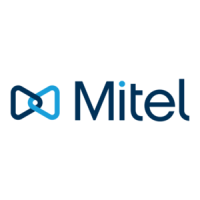Expansion Stages and System Capacity
Non-IP endpoints:
• Analogue terminal (FXS)
• Digital system terminal (DSI)
• DECT cordless phone (DSI)
• ISDN phone (BRI-S)
• External via analogue exchange (FXO)
• External via ISDN exchange (BRI-T/PRI)
• Internal voice mail system
• Auto attendant
• Internal announcement service
• Music on hold
• Conversation recording
• Announcement with audio file
• Queue with announcement
• Conference bridge
IP endpoints
• IP system phone
• Mitel SIP terminal
• Standard SIP terminal
• DECT cordless phone via SIP-DECT
• WiFi cordless phone via SIP-DECT
• WiFi cordless phone via SIP access point
• External via SIP provider
IP endpoints on satellites:
In normal operation all IP endpoints are registered
with the master, even if they are located on the
satellite.
Standard Media Switch modes of operation
The operation mode of the integrated standard media switch is defined with the VoIP mode parameter in
the Media resources view. The configured mode is always valid for the entire node.
Table 17: Integrated Standard Media Switch modes of operation
VoIP mode Explanation Licences
No VoIP No VoIP channels can be
configured.
G.711 Although more voice channels
are available per DSP in mode
G.711 than in hybrid mode,
the volume of voice data is
greater and requires a greater
bandwidth.
G.711/G.729 The VoIP hybrid mode G.711/
G.729 handles both G.711 and
G.729 for coding voice data.
Secure G.711 Same as G.711 but with a more
secure data transmission using
the SRTP protocol.
The Secure VoIP licence, valid
right across the system is
required.
Release 7.1
49 System Manual for Mitel SMB Controller

